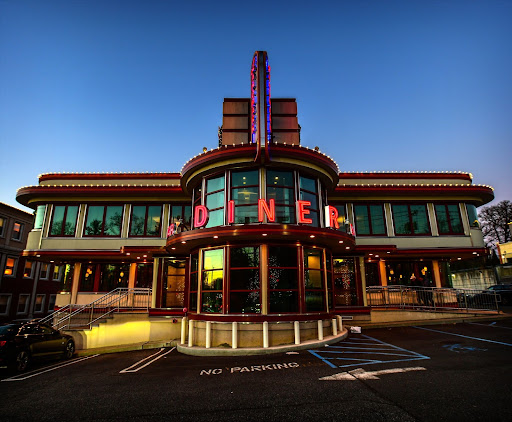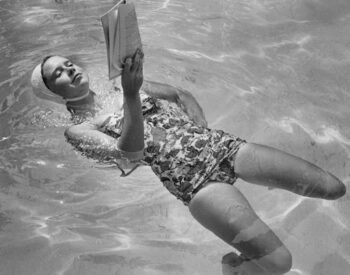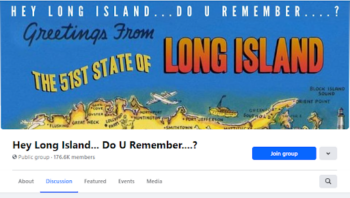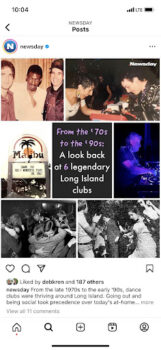Nostalgia as a beat? How Newsday is turning look-back coverage into a surprise driver of new subscribers
Shawna VanNess, Newsday,
The Landmark Diner in Roslyn, New York. (Newsday/Thomas A. Ferrara)
From favorite diners to long-shuttered dance clubs, readers of all ages love waxing about the way things used to be. Nostalgia is a beat that can work for any newsroom.This is a series on Better News to a) showcase innovative/experimental ideas that emerge from the Knight-Lenfest Newsroom Initiative and b) share replicable tactics that benefit the news industry as a whole.
This “win” comes from Shawna VanNess, associate managing editor of Newsday, which participated in the Poynter Institute’s Table Stakes program in 2017-18 and the Knight-Lenfest Major Market Table Stakes program in 2019.
Question: What problem were you trying to solve, and why was that problem strategically important to your organization?
A: Newsday is a legacy newspaper-turned-multiplatform news organization based on Long Island, N.Y., where there’s a strong local identity and an affinity for hyper-local news. With a subscriber-based business model and a hard paywall, Newsday is aware of which coverage topics our readers/viewers are the most plugged-into.
Newsday’s home delivery audience is loyal and passionate about their communities; many have subscribed to the newspaper for decades. Meanwhile, niche content has been an effective way to convert new digital subscribers. The newsroom continues to look for fresh ways to grow our reach online to grow our subscriptions.
Readers had shown burgeoning interest in nostalgia stories since early 2019 but it was during the height of the pandemic when our lifestyle-entertainment team began to treat this coverage as a beat.

A photo of a local woman floating in the pool at CW Post college on June 27, 1960 from a nostalgia piece. (Newsday//Jim Nightingale)
Q: How did you go about solving the problem?
A: Newsday’s entertainment editor had noticed a sharp spike in engagement on API’s Metrics for News platform for where-are-they-now stories about retired New York metro-area TV newscasters – so it became an ongoing series.
When the pandemic lockdown shuttered movie theaters, restaurant dining rooms (and well, everything), the Features team leaned deeper into nostalgia story angles as an antidote to not having any new events, movies and festivals to cover.
Long Islanders couldn’t go to concerts, so we marked the milestone anniversaries of two mega suburban arenas with a look-back at the most iconic events that happened there. Food critics found the oldest restaurants on Long Island and explored why affection ran so high. Visuals came easily from the newsroom’s deep photo archives (readers who shared their memories often had old photos of venues and events too).
Q: What worked?

A screenshot of ‘The Hey Long Island…Do U Remember?’ Facebook group that has 176,000 members who reminisce about the decades-past.
A: Nostalgia is good news – for readers and for business. So far this year, entertainment-related nostalgia stories have up to 40% higher engagement and triple the paths to conversions (a metric that shows which content users engage with on the way to becoming paying customers) as the average story.
Nostalgia plays particularly well on Facebook, where Newsday’s social media team sees outsized engagement by sharing this coverage with a tuned-in audience that’s already having these kinds of conversations (a niche Long Island-focused nostalgia Facebook group has 176,000 members who love to reminisce about the past).
Nostalgia angles can work in routine daily coverage, too: Stand-alone stories about longtime restaurants closing have a conversion rate that’s more than double what stories about new restaurants openings generate, making this genre of coverage among the top-performing content for the year for Newsday’s restaurants team, FeedMe.
Bottom line: Treating nostalgia as a beat is helping Newsday grow digital subscriptions.
Q: What didn’t work?
A: While nostalgia is the rare coverage that satisfies readers across the ages/demographics and often works well in print and digital platforms, journalists have to navigate painful realities of the past.
Historically, news pages were not as inclusive, nor as sensitive to issues of race, sex and gender as they strive to be now. Archives have gaps and omissions; stereotypical language can lurk in decades-old stories; images need to be reviewed with a careful eye.
Also: Keep it local. Metrics were much lower for Newsday’s earliest nostalgia stories about favorite old movies to stream and best throwback TV series to binge – this is information people can get elsewhere for free. We learned quickly that we need to center our nostalgia stories around Long Island places and events that people remember.
Q: What happened that you didn’t expect?
 A: This work is fun and has a long tailwind. A story profiling Long Islanders who met and fell in love at classic dance clubs inspired a more recent look-back at popular summer beach season clubs, which got 53% percent of its traffic from Facebook. Nostalgia stories can be re-featured on digital platforms throughout the year, helpful during a sluggish news cycle or between seasons. What’s more, editors and reporters have been startled by the strong, generally positive reactions this coverage draws from our readers, who write in with their own memories or share ideas for other angles. Several reporters have come to welcome nostalgia assignments as a break from their daily beats.
A: This work is fun and has a long tailwind. A story profiling Long Islanders who met and fell in love at classic dance clubs inspired a more recent look-back at popular summer beach season clubs, which got 53% percent of its traffic from Facebook. Nostalgia stories can be re-featured on digital platforms throughout the year, helpful during a sluggish news cycle or between seasons. What’s more, editors and reporters have been startled by the strong, generally positive reactions this coverage draws from our readers, who write in with their own memories or share ideas for other angles. Several reporters have come to welcome nostalgia assignments as a break from their daily beats.
Q: What advice would you give to others who try to do this?
A: This coverage can be adapted in almost any market, in a wide variety of coverage topics. Consider the places, historical events, annual traditions and other milestone memories your audience holds affinity for. Invite the newsroom to a brainstorming session and assign a story or two to experiment with this genre. Monitor the metrics data for a sense of what’s working (or not). Newsday’s success with nostalgia comes after previous experiments such as re-running classic editions of the newspaper as an opt-in series and launching an Instagram account dedicated solely to vintage archive photos.
Q: What’s next for this work?
A: We’ve done about 20 of these packages in the past two years, with topic teams like Entertainment scaling up to monthly nostalgia-inspired stories. Now we’re considering launching an email newsletter as a gateway to draw in new digital subscribers.